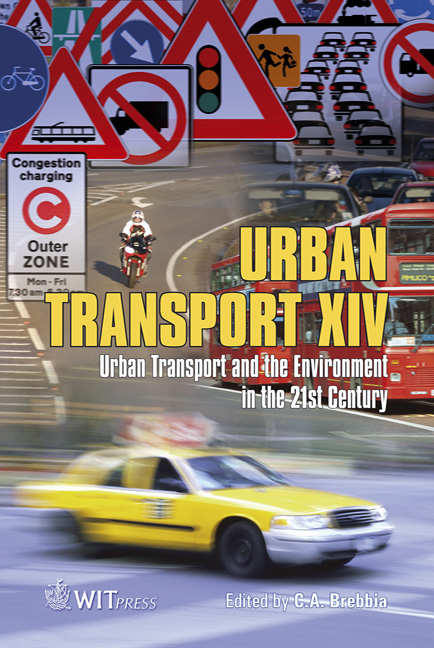Passenger Intermodal Terminal Stations: Role And Infrastructure
Price
Free (open access)
Transaction
Volume
101
Pages
10
Page Range
233 - 242
Published
2008
Size
297 kb
Paper DOI
10.2495/UT080231
Copyright
WIT Press
Author(s)
M. Pitsiava-Latinopoulou, E. Zacharaki, S. Basbas & I. Politis
Abstract
Public Transport (PT) is supposed to be probably the most up-to-date answer to the growing need for relieving traffic congestion, the associated environmental problems and the continuously increasing cost for transferring passengers. The expansion of urban centres cannot support a PT system that would serve the passenger directly from the origin to the destination point. The combination of various modes of transport between trip ends represents the new reality. The aim of this paper is to present general guidelines for securing safe and comfortable transfers between different transport modes. Keywords: passenger transport, intermodal terminals, stations, transfer. 1 Introduction It is well known that most of the developed countries worldwide are characterized by the continuous growth of the private car ownership index on one hand, and the increase of daily trips made by all transport modes on the other hand. This fact inevitably leads to heavily congested transport networks, which in turn leads to further downgrading of the quality of life and the environmental conditions, especially in urban areas. Up-to-date approaches applied in the field of transport engineering and planning have been trying to relieve the above mentioned situation by modifying the transport supply and demand respectively [1,2]. Since the growth of people’s mobility represents, among other things, the level of the quality provided by the transport system, any solution to the problem should include the facilitation of the Public Transport (PT) system transfers in a
Keywords
passenger transport, intermodal terminals, stations, transfer.





